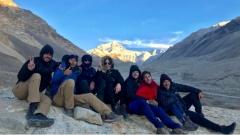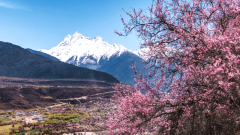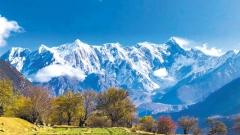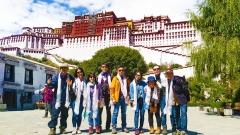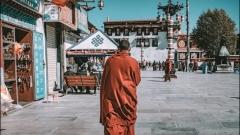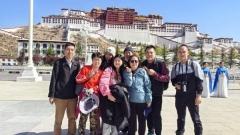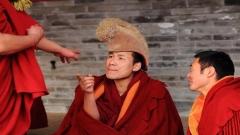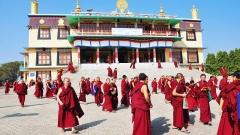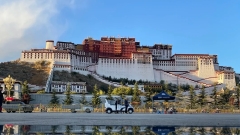Tibet is known for its breathtaking sacred lakes, yet few places feel as enchanting and peaceful as Lake Basum Tso. Nestled deep within the forests and mountains of eastern Tibet’s Nyingchi Prefecture, this turquoise alpine lake combines natural beauty with rich Tibetan culture. Often overlooked by travelers who focus on Lhasa or Everest, Basum Tso offers a quieter, more intimate experience of the Tibetan Plateau.
Location and Geography
Lake Basum Tso, also called Basong Co, lies about 360 kilometers east of Lhasa, in Bayi District of Nyingchi. Sitting at an altitude of 3,480 meters (11,417 ft), it is surrounded by snowcapped peaks and thick pine forests, creating a striking contrast to the open, arid plateau landscapes more commonly associated with Tibet.
The lake stretches about 18 kilometers long and covers over 25 square kilometers. Fed by glacial meltwater, Basum Tso’s waters remain pristine, reflecting emerald and turquoise tones that shift with sunlight and seasons.
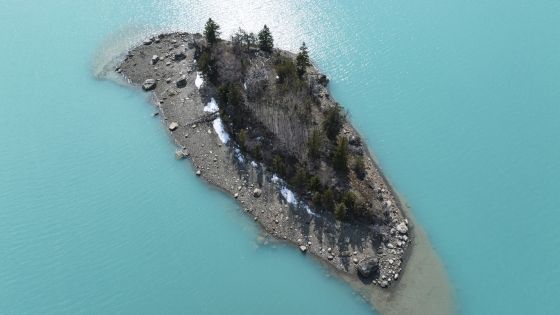
Basomtso
Cultural and Spiritual Significance
Basum Tso is not only a scenic treasure but also a sacred lake of the Nyingma School of Tibetan Buddhism. Legends say that Guru Padmasambhava, who brought Buddhism to Tibet, once meditated near this lake.
At the center of Basum Tso lies Tashi Island, a small but spiritually important site. The island is home to the Cuozong Gongba Monastery, a 600-year-old temple where monks continue daily practices. Pilgrims visit to spin prayer wheels, offer butter lamps, and circle the island in reverence.
Prayer flags around the shore and on the island flutter in the wind, symbolizing peace and blessings carried across the landscape.
What to See and Do
-
Tashi Island and Cuozong Gongba Monastery
-
Take a boat ride to the monastery on the island. The serene setting, surrounded by mountains and water, makes it one of Tibet’s most photogenic spiritual sites.
-
-
Scenic Shoreline Walks
-
Basum Tso’s shores are ideal for short hikes, with paths winding through pine forests, meadows, and traditional Tibetan villages.
-
-
Photography and Reflection Views
-
Early morning and evening provide the best conditions to capture mirror-like reflections of snowy mountains on the lake’s surface.
-
-
Local Villages and Tibetan Culture
-
Nearby villages, such as Tashi Village, offer authentic glimpses into Tibetan rural life. Here you can experience traditional wooden architecture and taste local delicacies like yak butter tea.
-
Best Time to Visit
-
Spring (April–May): Fresh greenery and wildflowers surround the lake.
-
Summer (June–August): The weather is mild, and the lake is at its brightest turquoise.
-
Autumn (September–October): The most popular season, with golden forests framing the crystal waters.
-
Winter (November–March): Snowy peaks and a tranquil atmosphere, but temperatures drop significantly.
The ideal time for most travelers is September to October, when the weather is stable, and the scenery is at its most colorful.
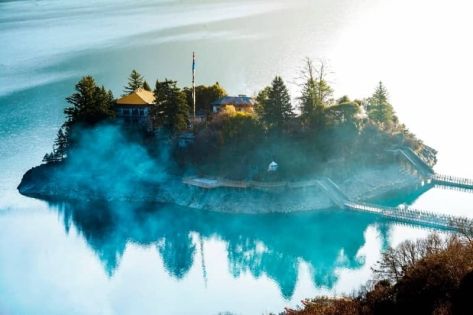
Basomtso Lake
Travel Tips
-
Getting There: From Lhasa, it takes about 7–8 hours by car to reach Basum Tso, usually included in Nyingchi tours.
-
Altitude: At 3,480 m, altitude sickness is milder than in central or western Tibet, but it’s wise to acclimatize in Lhasa before visiting.
-
Clothing: The lake area can be chilly even in summer—bring layers, a jacket, and rain gear.
-
Respect the Culture: Avoid touching religious objects without permission, and walk clockwise when visiting monasteries or sacred sites.
Why Visit Basum Tso?
Unlike Tibet’s well-known lakes such as Yamdrok or Namtso, Basum Tso remains relatively untouched by mass tourism. Its combination of alpine beauty, cultural depth, and peaceful atmosphere makes it perfect for travelers seeking a balance between nature and spirituality.
Whether you’re drawn by the shimmering turquoise waters, the ancient monastery, or the surrounding golden forests in autumn, Basum Tso promises an unforgettable experience—one that feels both deeply Tibetan and timelessly serene.
Conclusion
Lake Basum Tso is truly a hidden gem of eastern Tibet. Its stunning scenery, spiritual heritage, and tranquil environment make it an essential stop for those exploring beyond Lhasa. For travelers who want to see Tibet’s quieter side, away from crowds and closer to nature, Basum Tso offers exactly that—a perfect blend of beauty and serenity.



